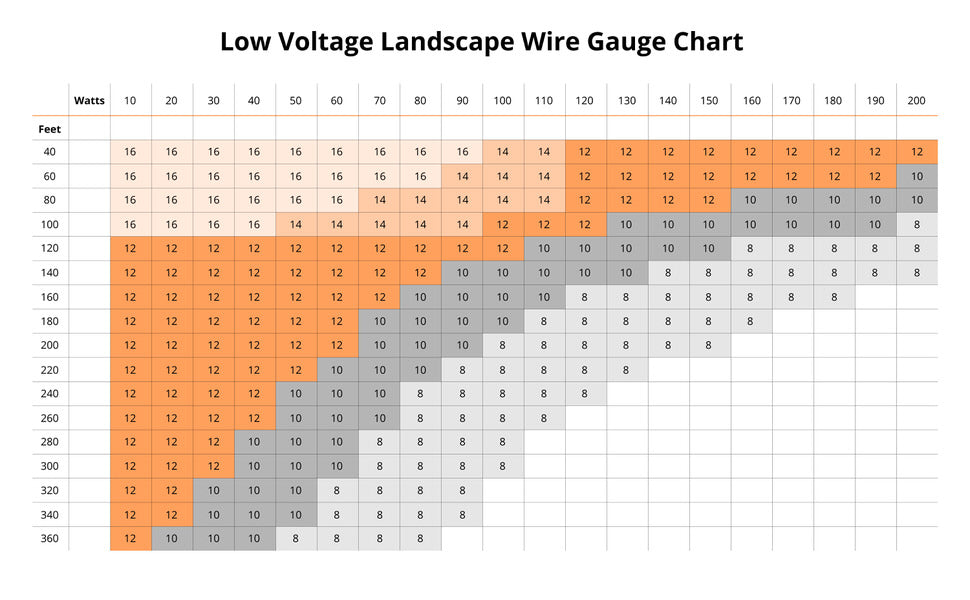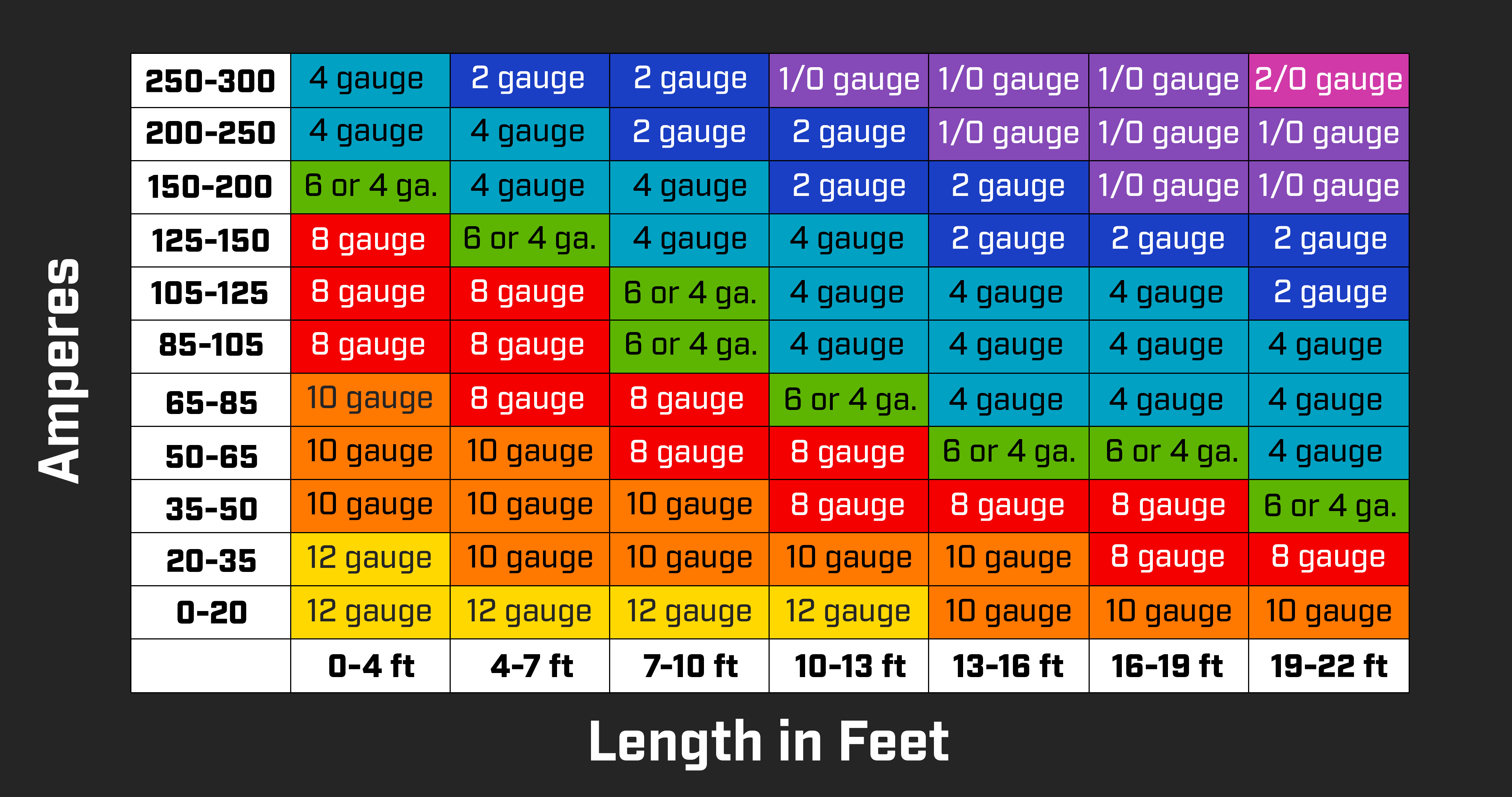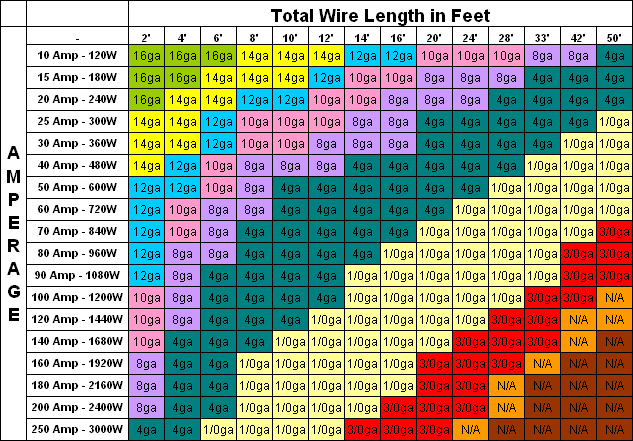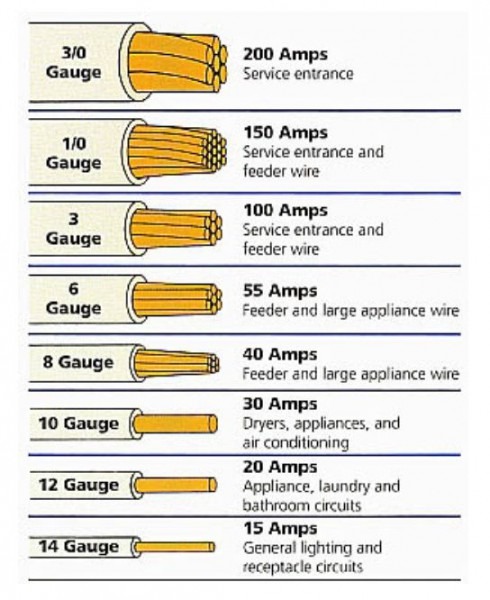

Your solar setup needs a battery to store the energy it traps from the sun’s rays. This also prevents any shorts in the circuit from being exposed to the elements, protecting your light bulbs as well. Outdoor wires are prone to being nicked and knocked around, so it’s best to make sure these have a thick plastic sheath to protect them. These wires are often exposed to the elements, so a thing non-conductive paint layer won’t be sufficient to protect them. Landscape, or outdoor lighting, needs to be protected a bit more. Have a look at our wire gauge voltage chart if you want to understand wire gauges a little better, and decide if the wires you’re using for your inside lights are sufficient for the voltage required. This is sufficient for the inside of your house. This means you can use a wire that has a very thin protective layer – some low-voltage wires even have a painted layer. If your lights are indoors, your wires will be well-protected from the elements. Something you should consider though is how protected your wires are. Remember, wire gauge refers to the wire size, which influences how much current and voltage can move through it. Long story short, you won’t need a different wire gauge for a light of the same voltage and current being used indoors or outdoors. Wondering if you need different wire gauges depending on whether your lighting is indoor or outdoor? We’ll explain below. This is why it’s important to make sure you’re using the correct wire – somebody could get injured if you’re running a high voltage through a low voltage wire with a thin sheath. The biggest difference between low-voltage wire and higher-voltage wire is the protective sheath around it. If your lights are more for ambiance, low-voltage wire sizes will be perfect for you. If you’re installing huge, bright lights in your house, then low-voltage wires aren’t for you. It’s best to use low voltage wire sizes for lighting that requires a low voltage to operate properly. You should also look at a solar wire size calculator to know which wires you need to get depending on the strength of your lights. These lights will be dimmer, which is what some people prefer. Low-voltage lights are usually used outdoors, but some people opt to have low-voltage lights on the inside of their houses too. Why Use Low Voltage Wire Sizes for Lighting?

Here’s a chart indicating the voltage of wires at different wattages and lengths in feet. Have a look at our high-voltage cable size chart if you’re working with electronics and appliances that require thicker wires that can carry a higher voltage safely. Low voltage wires can have a thin protective sheath because there’s a small amount of electricity moving through them, so the barrier between you and the wire doesn’t need to be very thick to do its job.

If a wire has no protective sheath on it, there is the risk that anybody that touches it will get shocked. In other words, it’s there to protect you. This sheath stops the electric energy from exiting the wire before it’s meant to. Low-voltage electronics can make use of a thin wire gauge with a very thin sheath coating it. This tells us that the diameter of a wire, or the wire gauge, is also responsible for determining the amount of voltage that can move through the wire. The diameter of a wire determines how many electrons it can safely transport, and therefore the amount of current that can move through it.Ĭurrent is directly proportional to voltage. The size or thickness of a wire is referred to as the wire gauge in the electronics world. Why Use Low Voltage Wire Sizes for Lighting?.Wire Size Chart for Low Voltage Lighting.It does use 10 gauge wire for 30 amp chassis wiring, though. and 18 Ga for routine chassis wiring, and only uses larger for specific purposes. No disagreement there from me! I won't say it's wrong to over-size house wiring either, I just don't agree that it adds anything to the quality of the install.
#24V WIRE GAUGE CHART UPGRADE#
That said, I totally agree that one should calculate or measure the voltage drop for headlights and upgrade wiring as needed. That just happens to be the chart I use, it might be wrong.

87 volts, based on 0.9989 ohms per 1000 feet from the chart I posted the link for. Also, I calculate the voltage drop at 25 amps and 24 volts over 35 feet of 10 Ga. 600 watts of headlights is a lot of lights. My high beams are way under 300 watts total, probably 260 watts (65 watt halogen times four). 24 volt headlights drawing 25 amps would be 600 watts of headlights. Headlights aren't what I thought we were talking about. I was saying that voltage drop on LED light runs and 1 amp fan runs are inconsequential.


 0 kommentar(er)
0 kommentar(er)
